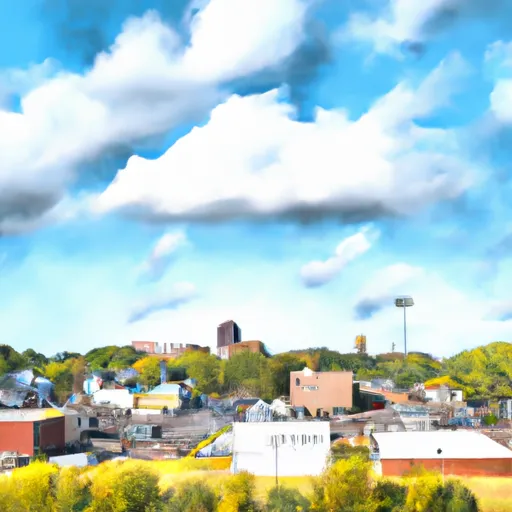-
 Snoflo Premium
Snoflo Premium
Get unlimited access to all our content
With no Ad interruptions! - Start Your Free Trial Login with existing account
Starbuck
Eden Index
Climate
6.0
•
Recreation
1.7
•
Community
1.8
•
Safeguard
3.4/10

Starbuck, Minnesota is a small town located in Pope County in the western part of the state. It experiences a continental climate, characterized by warm summers and cold winters. Average temperatures range from around 20°F (-7°C) in January to 75°F (24°C) in July. The town receives moderate precipitation throughout the year, with an annual average of around 25 inches (64 cm) of rainfall and 50 inches (127 cm) of snowfall.
The hydrology constituents in Starbuck are primarily influenced by Lake Minnewaska, a 7,110-acre lake located to the south of the town. The lake not only provides a picturesque setting but also offers various outdoor recreational opportunities. Fishing enthusiasts can try their luck at catching species like walleye, northern pike, bluegill, and largemouth bass. Boating, water skiing, and swimming are also popular activities on the lake.
Starbuck is surrounded by scenic landscapes, making it an ideal destination for outdoor recreation. The area offers opportunities for hiking, camping, and birdwatching in nearby conservation areas and state parks. Glacial Lakes State Park, located approximately 15 miles (24 km) northeast of Starbuck, features rolling hills, lakes, and diverse wildlife, providing visitors with a chance to explore nature and enjoy the outdoors.
What is the Eden Index?
The Snoflo Eden Index serves as a comprehensive rating system for regions, evaluating their desirability through a holistic assessment of climate health, outdoor recreation opportunities, and natural disaster risk, acknowledging the profound impact of these factors on livability and well-being.
Climate Health Indicator (CHI): 6.0
Starbuck receives approximately
659mm of rain per year,
with humidity levels near 84%
and air temperatures averaging around
7°C.
Starbuck has a plant hardyness factor of
4, meaning
plants and agriculture in this region thrive during a short period during spring and early summer. Most
plants will die off during the colder winter months.
By considering the ideal temperature range, reliable water supplies, clean air, and stable seasonal rain or snowpacks, the Climate Health Indicator (CHI) underscores the significance of a healthy climate as the foundation for quality living.
A healthy climate is paramount for ensuring a high quality of life and livability in a region, fostering both physical well-being and environmental harmony. This can be characterized by ideal temperatures, reliable access to water supplies, clean air, and consistent seasonal rain or snowpacks.
Weather Forecast
Streamflow Conditions
Minnesota
Area Rivers
Minnesota
Snowpack Depths
Minnesota
Reservoir Storage Capacity
Minnesota
Groundwater Levels
Recreational Opportunity Index (ROI): 1.7
The Recreational Opportunity Index (ROI) recognizes the value of outdoor recreational options, such as parks, hiking trails, camping sites, and fishing spots, while acknowledging that climate plays a pivotal role in ensuring the comfort and consistency of these experiences.
Access to outdoor recreational opportunities, encompassing activities such as parks, hiking, camping, and fishing, is crucial for overall well-being, and the climate plays a pivotal role in enabling and enhancing these experiences, ensuring that individuals can engage in nature-based activities comfortably and consistently.
Camping Areas
| Campground | Campsites | Reservations | Toilets | Showers | Elevation |
|---|---|---|---|---|---|
| Glendalough State Park | 22 | 1,350 ft | |||
| Wolf Lake City Campground | 14 | 1,540 ft | |||
| Chippewa Co Park | 8 | 1,374 ft |
Nearby Fishing
Catastrophe Safeguard Index (CSI):
The Catastrophe Safeguard Index (CSI) recognizes that natural disaster risk, encompassing floods, fires, hurricanes, and tornadoes, can drastically affect safety and the overall appeal of an area.
The level of natural disaster risk in a region significantly affects safety and the overall livability, with climate change amplifying these risks by potentially increasing the frequency and intensity of events like floods, fires, hurricanes, and tornadoes, thereby posing substantial challenges to community resilience and well-being.
Community Resilience Indicator (CRI): 1.8
The Community Resilience Indicator (CRI) recognizes that education, healthcare, and socioeconomics are crucial to the well-being of a region. The CRI acknowledges the profound impact of these elements on residents' overall quality of life. By evaluating educational resources, healthcare accessibility, and economic inclusivity, the index captures the essential aspects that contribute to a thriving community, fostering resident satisfaction, equity, and social cohesion.

